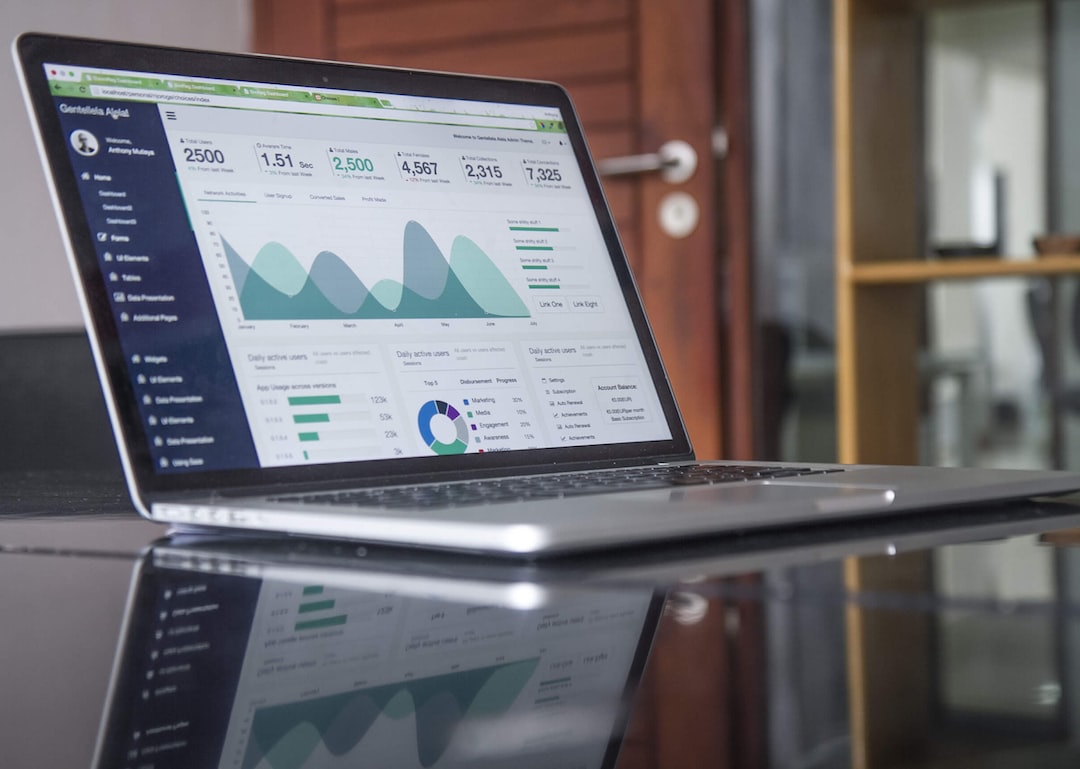What is Web Accessibility?
Web accessibility refers to the practice of making websites usable by people of all abilities and disabilities. When websites are correctly designed, developed and edited, all users have equal access to information and functionality.
Benefits of Web Accessibility
Making sure websites and applications are accessible not only helps people with disabilities navigate the web more easily, it also benefits people without disabilities in numerous ways. These include:
- Increased usability- With websites built to be accessible, users are able to find what they need quickly and easily, regardless of their level of experience.
- Reduced costs- When websites are made accessible, organisations can save money associated with training and customer support costs.
- Legal compliance- Making websites more accessible ensures organizations meet legal requirements, such as the Americans with Disabilities Act (ADA).
- Enhanced search engine optimization- Websites that are made accessible are more likely to show up in higher rankings on search engine results.
Web Accessibility Standards and Guidelines
When creating an accessible website, it is important to understand the standards and guidelines associated with making a website compliant. The World Wide Web Consortium (W3C) is the main international standards organization for the internet, and it has published several Web Content Accessibility Guidelines (WCAG) for developers to follow.
The most recent version of WCAG is version 2.1, which was released in June 2018. This version includes 17 guidelines for conformance and 62 testable success criteria used to evaluate websites for accessibility. It also defines three levels of conformance (A, AA, and AAA) that indicate the website's level of accessibility.
Tools for Web Accessibility
In addition to understanding the standards and guidelines for web accessibility, there are several tools that developers can use to ensure a website is compliant. These tools include automated testing tools, such as Lighthouse and WAVE, as well as manual testing tools, such as the Keyboard Accessibility Toolbar and NVDA screen reader.
Using these tools, developers can quickly test websites to identify any potential accessibility issues and make any necessary changes. It is important to keep in mind, however, that automated tools can often provide false positives, so manual testing is still recommended.
Conclusion
Web accessibility is important to ensure that all users can access and use websites and applications. By understanding the standards and guidelines associated with web accessibility, as well as utilizing
.
A Brief History of Web Accessibility
The concept of Web Accessibility began to emerge in the 1990s, when the World Wide Web was still in its infancy. At the time, web development was still being done largely by the private sector, and the concept of creating a user-friendly experienc e for people with disabilities was not well understood. As the Web started to take off, it became evident that there needed to be a way for people with disabilities to have access to websites as well. This sparked the creation of the Web Accessibility Initiative (WAI), an organization dedicated to ensuring that people with disabilities had equal access to the Web.
e for people with disabilities was not well understood. As the Web started to take off, it became evident that there needed to be a way for people with disabilities to have access to websites as well. This sparked the creation of the Web Accessibility Initiative (WAI), an organization dedicated to ensuring that people with disabilities had equal access to the Web.
As a result of the work done by the WAI, the first version of the Web Content Accessibility Guidelines (WCAG) was released in 1999. The WCAG was the first set of guidelines designed to help make the Web more accessible to all users, regardless of their disabilities. Since then, the WCAG has been updated several times, and is now in its second iteration (WCAG 2.1). The guidelines have been adopted globally, and are now the standard used by most companies to ensure their websites are accessible to all users.
How Accessibility Impacts User Experience
When designing a website, it is important to remember that accessibility impacts the user experience. People with disabilities or impairments may have difficulty navigating a site or understanding the content if it is not designed with their needs in mind. For example, if the site does not provide text alternatives for images, people who are visually impaired may not be able to understand the content. Similarly, if the site does not provide closed captions for videos, people who are deaf or hard of hearing may have difficulty accessing the content.
By taking the time to create a website or app that is accessible for all users, designers can ensure that everyone has an equal opportunity to access and understand the content. This can lead to increased user engagement, and even a competitive edge over other websites that are not designed with accessibility in mind. Additionally, companies that are compliant with WCAG standards can benefit from government incentives in some countries.
Challenges Faced by Current Accessibility Standards
Despite the progress that has been made in making the web more accessible, there are still challenges that prevent a truly unified web experience. One of the most significant challenges is the lack of consistency among different browsers and operating systems. For example, Microsoft Edge follows different standards than Chrome or Firefox, which can lead to issues with accessibility features not working across platforms. Additionally, the technologies used to create sites are constantly changing, which can make it difficult to keep up with the latest accessibility standards.
Another challenge faced by designers is making sure that their sites are accessible to all levels of ability. While WCAG guidelines provide a set of standards, it is ultimately up to the designer to ensure that the site is designed with all users in mind. This requires looking beyond simply making sure the content is accessible, and requires considering how user s with different abilities will interact with the site. For example, it is important to consider how someone with limited motor skills might use the site, or how someone with low vision might be able to navigate the page.
s with different abilities will interact with the site. For example, it is important to consider how someone with limited motor skills might use the site, or how someone with low vision might be able to navigate the page.
Best Practices for Accessible Web Design
When designing a website, it is important to keep in mind best practices for accessible design. This includes using fonts that are easy to read, providing alternative text for images, utilizing headings correctly, and creating meaningful link names. Additionally, it is important to ensure that all content is coded properly so that assistive technologies can access it. For example, ARIA attributes can be used to label sections of the page, and proper coding can help ensure that the page is navigable by keyboard.
In addition to these technical best practices, it is also important to think creatively about how to make the site accessible to all users. This could include adding audio versions for video content, creating an app with voice commands, or even adding a mobile version of the site to make it easier for people with limited mobility to access the content. By taking the time to consider the needs of different users, designers can ensure that their sites are accessible to everyone.
Conclusion
Designing a website or app that is accessible to all users is not only the responsible thing to do, but can also help increase user engagement and provide a competitive edge. With the rise of the digital economy, web accessibility has become increasingly important, and understanding the best practices for designing an accessible site is essential. From understanding the history of web accessibility to implementing best practices, designers should take the time to ensure that their sites are accessible for all users, regardless of their disabilities.
1. Ensuring that all images have alt text to describe the content.
2. Providing alternative text for links and buttons.
3. Creating keyboard shortcuts for navigation.
4. Using heading tags (
,etc.) to structure content.
5. Providing clear labels for form fields.
6. Adding captions, transcripts, and audio descriptions for multimedia content.
7. Write understandable and logical page titles.
8. Using descriptive HTML tags for different types of content.
9. Ensuring that content is readable without the need for a mouse.
10. Making sure that text and background colours contrast enough to be visible.To go further on the topic
5. Providing clear labels for form fields.
6. Adding captions, transcripts, and audio descriptions for multimedia content.
7. Write understandable and logical page titles.
8. Using descriptive HTML tags for different types of content.
9. Ensuring that content is readable without the need for a mouse.
10. Making sure that text and background colours contrast enough to be visible.
To go further on the topic
If you'd like to explore more on the topic of Web Accessibility: Designing for All Users, we recommend the following literature:
1. Web Accessibility: Understanding the New Rules of Inclusion (Ingram, 2019)
2. Inclusive Design Patterns: Coding Accessibility Into Web Design (Hogbin, 2016)
3. Accessibility for Everyone: Understanding the Section 508 Accessibility Requirements (Jang, 2013)
4. Web Accessibility: A Foundation for Research (Karan, 2019)
5. Designing for Accessibility (Green, 2018)
6. Design Accessible Web Sites (Garrett, 2011)
7. Accessible Web Design: Techniques, Standards, and Best Practices (Alsop, 2006)
8. Web Design For All: The Authoritative Guide to Accessibility (Johnson, 2018)
9. Accessible Web Design: Building Accessible Websites (De Graaff, 2016)
10. Web Design with HTML, CSS, JavaScript & jQuery (Duckett, 2019)


